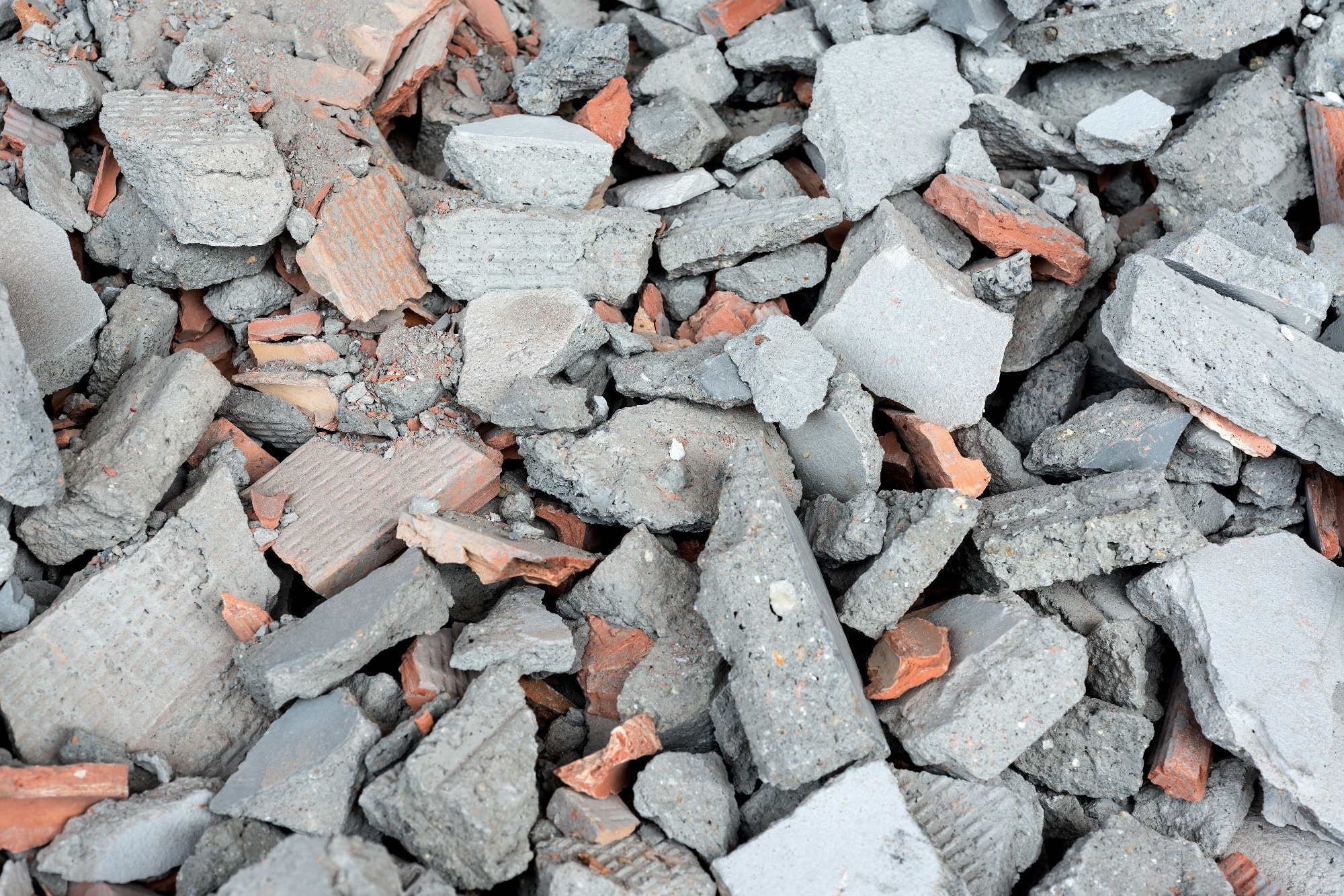Scientists have found that adding air-entrainment to recycled brick aggregate concrete dramatically boosts its freeze-thaw durability, demonstrating its potential for application in cold-weather construction.

Image Credit: TamTongKao-Ien/Shutterstock.com
A new study published in Case Studies in Construction Materials explores this breakthrough by testing 12 concrete mixtures with varying water-to-cement ratios and recycled brick aggregate replacement levels. These mixes were exposed to 300 rapid freeze-thaw (FT) cycles to evaluate their resilience under extreme conditions.
Background
Recycled brick aggregate (RBA) has garnered attention in recent years as a sustainable alternative to natural coarse aggregate (NCA). It is a particularly well-placed material due to the high volume of fired clay brick waste from demolition projects.
While RBA’s mechanical properties can rival those of NCA, its high porosity and water absorption pose a challenge, as these properties often accelerate FT damage in concrete.
Air-entraining admixtures (AEA) are a known solution for improving FT resistance in traditional concrete, but so far, their role in RBAC has remained underexplored. This study examines how air-entrainment might counteract the vulnerabilities introduced by RBA, especially in cold climates.
Methodology
In the study, researchers sourced and manually crushed brick waste from demolished buildings to produce RBA. They designed 12 different RBAC mixes with varying RBA content (0, 25, 50 and 100 %) and water-to-concrete (w/c) ratios (0.55, 0.45, and 0.35). As a result of RBA's porous nature, the aggregates underwent saturated-surface-drying (SSD): a process involving 24-hour water immersion followed by one hour of air drying.
The researchers assessed fresh concrete properties like slump and water absorption while hardened specimens were tested for compressive, flexural, and splitting tensile strength.
FT durability was evaluated using a computer-controlled apparatus that cycled the samples through 2.5 hours of freezing and 1.5 hours of thawing. They used mercury intrusion porosimetry (MIP) and X-Ray computed tomography (XCT) to analyze internal structural changes of the different mixtures.
Results and Discussion
The study showed that increasing RBA content without air entrainment consistently worsened FT durability. This depreciation was evident in higher mass loss, surface damage, and reduced compressive strength. But, when combined with a low w/c ratio, air entrainment helped buffer internal pressure from ice expansion and significantly improved performance.
Structural analysis showed that concrete mixes with a 0.35 w/c ratio maintained a pore size distribution comparable to conventional concrete, while mixes with higher w/c ratios formed more harmful pores.
XCT scans revealed that whilst RBA particles were prone to cracking during FT cycling, the entrained air voids acted as pressure-relief zones, preserving the mortar matrix and overall structural integrity.
Looking across the different w/c ratios and RBA content, air-entrained RBAC at 0.35 w/c ratio and up to 50 % RBA content maintained mechanical strength close to conventional concrete - even after 300 FT cycles. In contrast, non-air-entrained RBAC under the same conditions failed to meet durability thresholds.
The researchers also developed a Weibull-based FT damage model to predict the service life of air-entrained RBAC across different climates. The model validated their investigative results, showing that durability decreases as RBA content increases; a 100 % replacement led to a 46 % reduction in service life compared to concrete with NCA.
Based on these findings, the study recommended capping RBA content at 50 % and keeping the w/c ratio at or below 0.45 for use in FT-prone regions.
Download your PDF copy now!
Conclusion
This research revealed substantial improvements of FT-cycle damage to concrete by combining air-entrainment with a low water-to-cement ratio, making it a valuable matrix in cold-climate construction. Air-entrained RBAC with a 0.35 w/c ratio minimized internal damage and offers a durable, sustainable alternative to traditional concrete.
Journal Reference
Atasham ul Haq, M. et al. (2025). Optimization and utilization of air-entrained recycled brick aggregate concrete under freeze-thaw environment. Case Studies in Construction Materials, 23, e04941. DOI: 10.1016/j.cscm.2025.e04941, https://www.sciencedirect.com/science/article/pii/S2214509525007399
Disclaimer: The views expressed here are those of the author expressed in their private capacity and do not necessarily represent the views of AZoM.com Limited T/A AZoNetwork the owner and operator of this website. This disclaimer forms part of the Terms and conditions of use of this website.